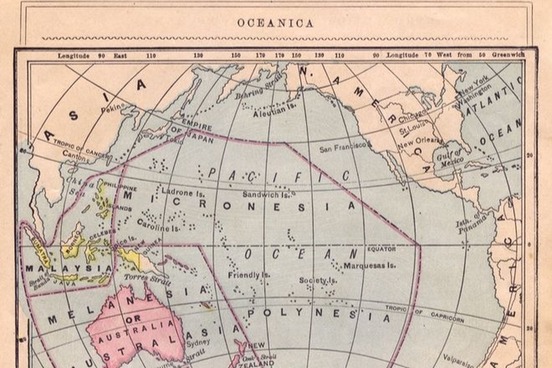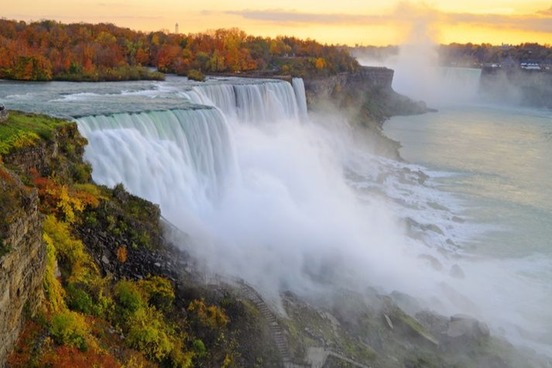
Shanghai
Shanghai, a port on the East China Sea, is one of the world’s largest seaports, the most populous city in China, and a center of international trade and finance. In the 1800s, voyages from the west were long, daunting, and not appealing for any prospective sailor, so crews would sometimes be filled out by men who had been kidnapped aboard, usually after being plied with drink or drugs. To shanghai someone is to kidnap that person onto a ship (or, more broadly, any unwanted position) and force him or her into unwilling labor, or a situation likened to such a kidnapping:
Five inches longer than the Chrysler Concorde and possessing far more presence, this stylish duo restored Chrysler’s reputation before the automaker was shanghaied in an erroneous merger with Daimler.
— Larry Printz, Tribune News Service, 6 Mar. 2019

Mackinaw
Many place names take on lives in the language as names for the products that originate from those areas, in particular fabric and clothing. Mackinaw, used for a heavy wool cloth or a coat made from it, derives from the name of a trading post (also spelled Mackinac) at the northern tip of Michigan’s Lower Peninsula.
The Straits of Mackinac, separating Michigan’s Upper and Lower Peninsulas, are spanned by the Mackinac Bridge, spanning approximately 5 miles.
(He) unlocked the cabin and the wood cutter boosted him into the loft. He reached under the two floors and brought out a mackinaw coat which was all rolled up seeming to contain something light, in weight, probably would weigh 30 or 40 pounds, very well done up.
— Jefferson Public Radio (Oregon), 31 Dec. 2013

Japan
Japan refers to a kind of decorative finish of hard lacquer, particularly a black kind made from asphalt. Popular in the 18th century, it was used for coating wooden furniture and later tinware, and is fused to the surface by way of heat.
Mrs. Yolland dived into this rubbish, and brought up an old japanned tin case, with a cover to it, and a hasp to hang it up by--the sort of thing they use, on board ship, for keeping their maps and charts, and such-like, from the wet.
— Wilkie Collins, The Moonstone, 1868
English speakers applied the name of the country Japan to the process known to have originated in Asia (though not necessarily Japan). The process that became known as japanning took hold as an imitative craft in Europe in the 17th and 18th centuries.

Derby
Derby is the name of a city on the Derwent River in northern England, but the use of the name Derby to refer to a horse race took a route through Edward Stanley, 12th earl of Derby (1752-1834), who instituted the event on his own estate. (Derby’s horse won the inaugural derby, natch.) The name was carried to similar races, most obviously the Kentucky Derby, first run in 1875.
The word finds versatile use for a range of other events, usually those open to participants that compete at the same time, like a fishing derby or demolition derby. Major League Baseball uses the name “Home Run Derby” for its annual home run-hitting contest held the night before the All-Star Game every July.

Niagara
Situated on the Niagara River, which carries water from Lake Erie to Lake Ontario on the U.S.-Canada border, Niagara Falls is a popular tourist and traditional honeymoon destination as well as an icon of Americana. It is the largest waterfall in North America in terms of volume and width.
Writers as early as Jonathan Swift have name-checked Niagara Falls as a comparison point for some kind of vast or loud outpouring (“My fall was stopped by a terrible squash, that sounded louder to my ears than the cataract of Niagara…” — Gulliver’s Travels, 1726). Nowadays you will frequently see Niagara used on its own to refer to any similar flow or vast quantity:
All that has changed. U.S. industrial production has diminished, leaving a stupefying vacuum for what comes next. From where are the jobs going to come, along with the skilled labor or training to do them? A Niagara of facts portends hope and points the way to the city as a vast geography of opportunity
— Kevin Sloan, DallasNews.com, December 2016

Golconda
Golconda is defined as “a rich mine” or “a source of great wealth.”
Because there’s grim inefficiency and redundancy in smaller municipal systems and because they lack the financing to maintain clean water standards, their purchase by public water utilities with access to technology and capital could be a Golconda for smart, patient investors.
— Malcolm Berko, The Durham Herald Sun, 29 Dec. 2017
Golconda is the name of a historical city and fortress in southern India that thrived in the 16th century as the capital of the Qutb Shahi kingdom, a powerful Muslim sultanate. The name Golconda means “round-shaped hill.” The area was known for its flourishing diamond trade, with its mines producing famous diamonds including the Koh-i-Noor (part of the British Crown Jewels) and the Hope Diamond.
Lord Fawn listened, but said very little. He especially did not say that Lady Eustace had had the stones valued. "They're real, I suppose?" he asked. Mr. Camperdown assured him that no diamonds more real had ever come from Golconda, or passed through Mr. Garnett's hands. "They are as well known as any family diamonds in England," said Mr. Camperdown.
— Anthony Trollope, The Eustace Diamonds, 1871





